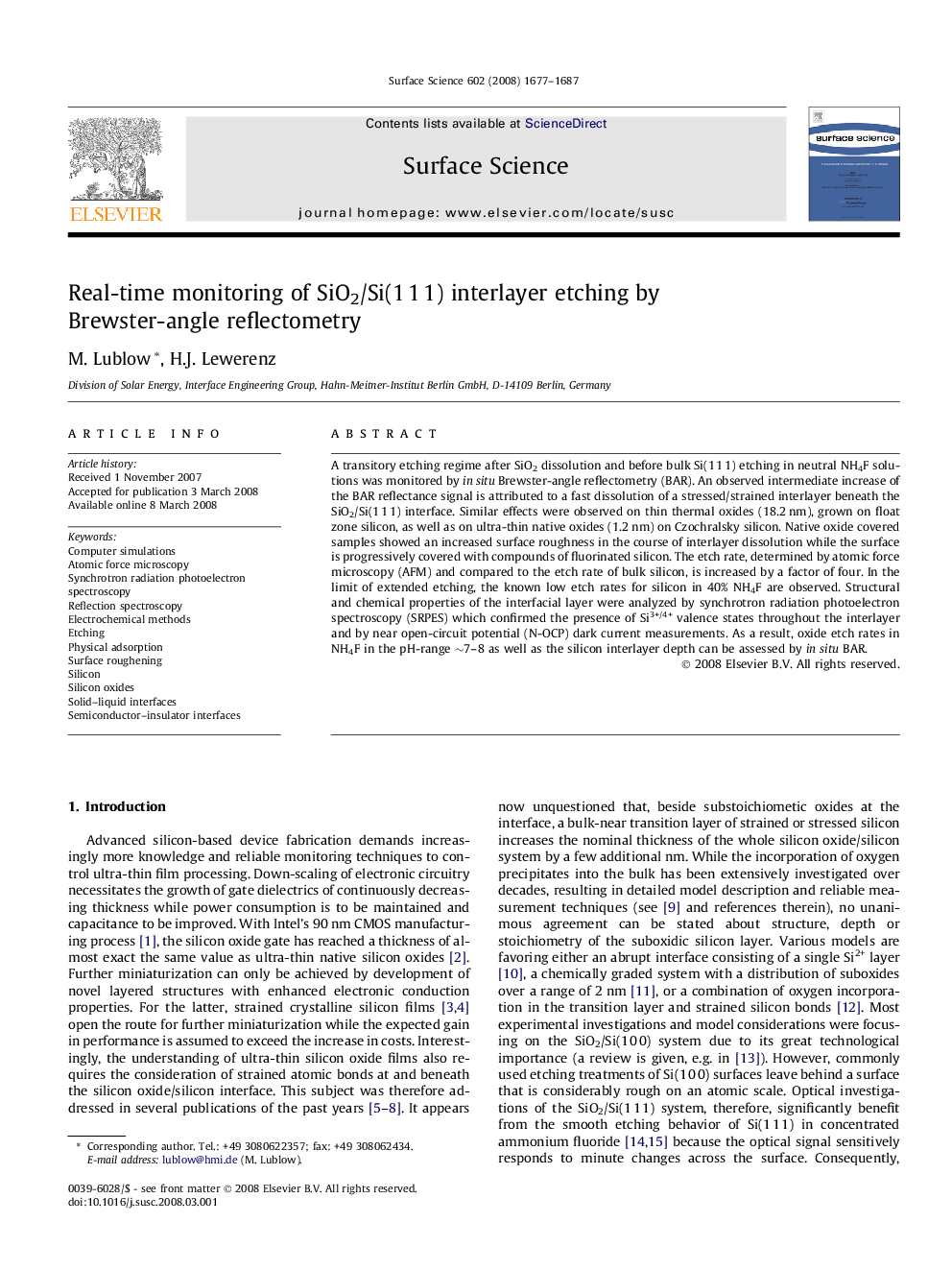| Article ID | Journal | Published Year | Pages | File Type |
|---|---|---|---|---|
| 5424998 | Surface Science | 2008 | 11 Pages |
A transitory etching regime after SiO2 dissolution and before bulk Si(1Â 1Â 1) etching in neutral NH4F solutions was monitored by in situ Brewster-angle reflectometry (BAR). An observed intermediate increase of the BAR reflectance signal is attributed to a fast dissolution of a stressed/strained interlayer beneath the SiO2/Si(1Â 1Â 1) interface. Similar effects were observed on thin thermal oxides (18.2Â nm), grown on float zone silicon, as well as on ultra-thin native oxides (1.2Â nm) on Czochralsky silicon. Native oxide covered samples showed an increased surface roughness in the course of interlayer dissolution while the surface is progressively covered with compounds of fluorinated silicon. The etch rate, determined by atomic force microscopy (AFM) and compared to the etch rate of bulk silicon, is increased by a factor of four. In the limit of extended etching, the known low etch rates for silicon in 40% NH4F are observed. Structural and chemical properties of the interfacial layer were analyzed by synchrotron radiation photoelectron spectroscopy (SRPES) which confirmed the presence of Si3+/4+ valence states throughout the interlayer and by near open-circuit potential (N-OCP) dark current measurements. As a result, oxide etch rates in NH4F in the pH-range â¼7-8 as well as the silicon interlayer depth can be assessed by in situ BAR.
